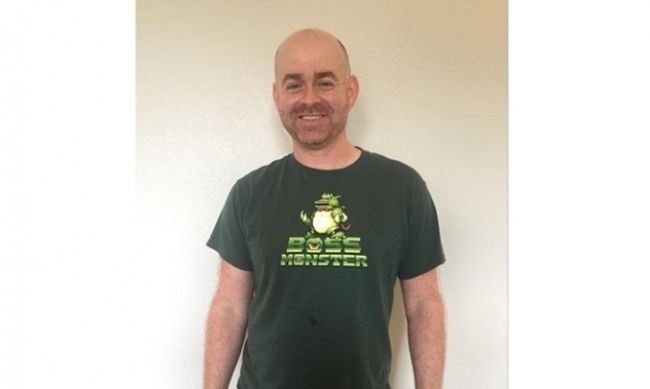In November of this year, Brotherwise Games will be five years old. Our flagship game, Boss Monster, and its many expansions, have been best sellers for most of those five years. Our first non-Boss Monster title, Unearth, will be in stores soon (see “Exclusive Preview: 'Unearth'”), and we have immediate plans to launch a third title. Like others before us, this year finds us attempting to be more than a one-hit wonder.
Over the next year, this column will document this attempt. We’ll talk successes and failures, small publisher strategy, and I’ll lift the curtain on how and why we make the decisions we do. To ground these discussions in something tangible, we’ll be documenting our planned third game, as yet untitled. For now, let’s call it The Game.
The Game has been brewing for some time, recently developing into something with promise. If all goes well, we’ll launch in retail in Spring 2018. As this column tracks The Game through this year, you’ll be able to follow it through all stages of development. Ultimately, you’ll see its success or failure in the market and judge for yourself why it had the fate it had.
To start things off, we’re going to tackle a question that, while abstract, turns out to be the most important we ask ourselves at Brotherwise: “Who is our customer?”
But first, a story:
I recently had the pleasure of having lunch with four friends and describing our plans for The Game to them. The first friend was a lifelong gamer with a game shelf a mile long. The second friend was a retailer who owned a gaming store where tabletop games were making up more and more of his weekly take. The third friend worked for a national distributor, and had been one of the first to gamble on carrying Boss Monster. The fourth friend was a relatively new addition to our circle; she was a buyer for a major big box chain that was just now catching on to the money to be made in hobby gaming.
“Sounds awesome!” said my gamer friend. “Will you Kickstart it? Let me know early. You know I love the Kickstarter exclusives you guys did with Boss Monster.”
“Please don’t do a Kickstarter,” moaned my retailer friend. “I’m sorry, but I just won’t buy as many copies if I know you’ve already saturated a chunk of the market.”
“How about you do a short Kickstarter, for the publicity,” suggested my distributor friend, “but you also do an exclusive deal with my company where retailers can get the Kickstarter extras if they order through us?”
“Wait,” said the big box rep, “why don’t you do an exclusive version of the game that’s only available at mass market and grow your base?”
“Do that,” said the retailer, “and I’ll personally murder you in your sleep.”
“Whatever,” interrupted the distributor. “Who are you targeting with this one? Fans know you for Boss Monster, and it’s been huge with more casual gamers. It will be far easier for me to sell this if you stick with that niche.”
“That would work for us too,” piped in Big Box.
“I don’t know,” complained my retailer friend. “90% of the players in my store are playing CCGs. Boss Monster’s worked for them, but more strategy-minded games are an easier cross-sell for me. Can you raise the skill quotient on this one?”
“Hey!” protested the gamer. “I play CCGs, and I love more casual games!”
And round and round we went.
Okay, so this lunch never happened, and my real friends in these roles are multi-dimensional, kind, and well aware of the conflicting goals and constituencies that I wrestle with every day. They work with me, rather than against each other, to try to find solutions that work for everyone.
But these caricatures are not so different from the voices in my head. Every decision we make balances among these constituencies, and at multiple points in the day, I have to consider, “Who are our customers, and how will this decision affect them?”
“But wait,” you might be thinking. “Isn’t the player your ultimate customer?” And of course, you’re right. The engine that keeps this industry revving is the game-playing consumer and the dollars they spend on their latest tabletop acquisition. Our company’s mission is to bring fun and joy to that person’s table. But if we only thought about the player when making decisions -- indeed, if we only thought about any one of these customers to the exclusion of the others -- we’d fail all of them. For the present, at least, they are inextricably linked.
Over the next, year this column will ask, among other questions: How do we pick the games we publish? How do we promote our brand? When do we Kickstart a game and when don’t we? When do we place our games in mass market? How do we succeed in a saturated market? At Brotherwise (and most game companies, I suspect), all of these questions get answered within the broader framework of “customer.” As we’ll see in the months to come, not everyone will be happy with every decision we make, and that’s okay. As I mentioned above, our real customers know how complex this industry is; many of them have their own customers and own decisions to make, and they’ll work with us to make The Game the best it can be.
Next month I’ll build on these ideas as we discuss “the Three Challenges.” How do we know when to invest in a game and when to kill it?
The opinions expressed in this column are solely those of the writer, and do not necessarily reflect the views of the editorial staff of ICv2.com.




